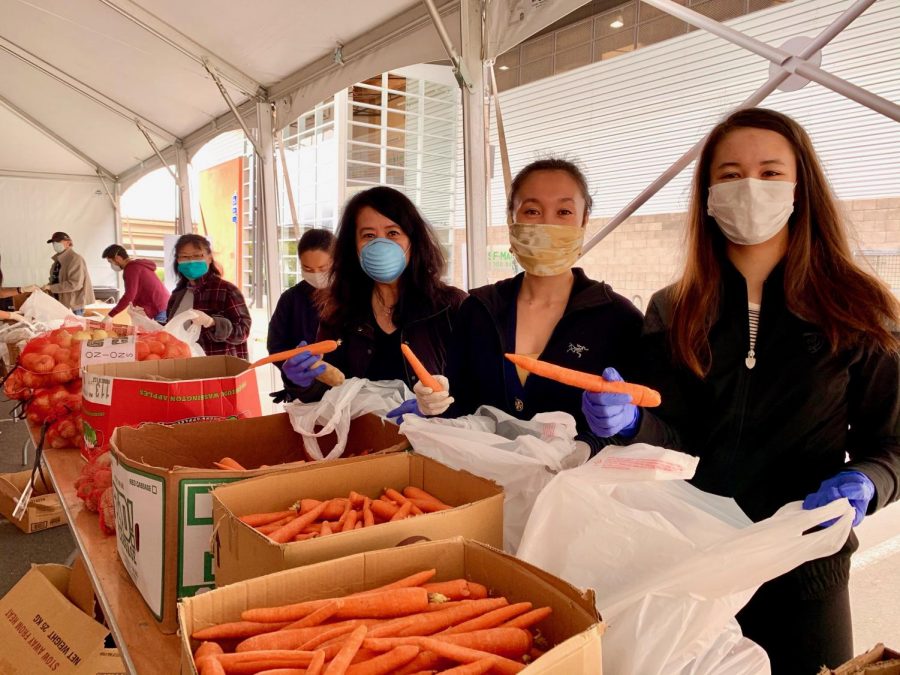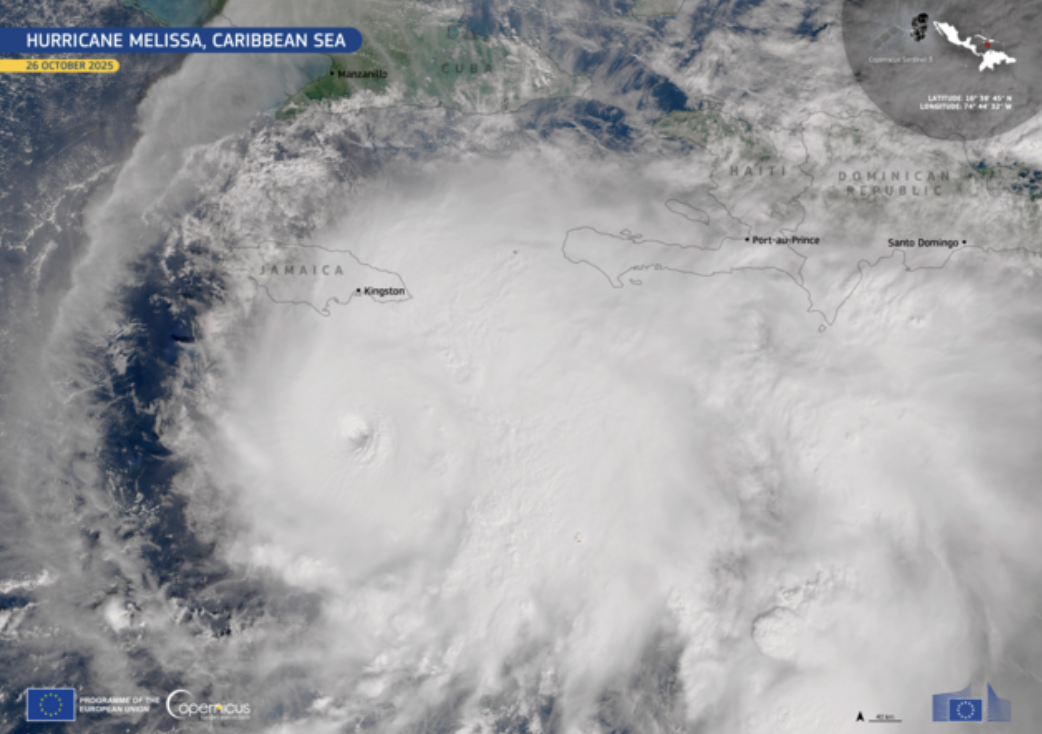Pandemic increases need for food banks
Food banks use safer methods to distribute food
Jocelyn Pinard
Junior Audrey Pinard, her sister Isabelle Pinard (CSH ‘12) and mother Jocelyn Pinard help pack 18,000 pounds of grocery bags to be distributed around the city. Volunteers filled bags with pork loin, beef patties, potatoes, carrots, cucumbers, celery, pears, apples, yogurt and rice.
February 21, 2021
As the country shifts in and out of various levels of lockdown, certainty is rare, especially economic certainty as workers who thought they had stable jobs suddenly do not have one. Food banks have become a necessity for many families who find themselves struggling to pay for everyday needs.
“We started seeing 50% more people and then 100% more people coming to our distributions,” Second Harvest of Silicon Valley CEO Leslie Bacho said. “We usually get about 180 calls a day and we started getting 1000 calls or getting 1200.”
Pre-pandemic, the food bank focused on a client-choice model, allowing clients to select fresh produce and staple supplies but it has altered this process to maintain safety, according to Bacho.
“We started boxing all of the food in our warehouse, creating mixed boxes of both refrigerated items and dry goods,” Bacho said. “We now have 130 drive-throughs, which is a really convenient way to serve people and reduce that kind of interaction.”
With an influx of new clients needing its services, Second Harvest and SF Marin Food Bank is welcoming volunteers to help package and deliver boxes of food.
“I think it’s really important to give back to the people in our community, especially during this challenging time,” senior Audrey Pinard said. “Volunteering is a nice way to not only give back, but connect with other members of the food bank.”
The food banks distribute food to other locations such as the Richmond Community Center, allowing its resources to assist a wider range of people in need. The food is then picked up by volunteer drivers and delivered to clients’ homes.
“We usually pick up between 10 to 20 bags of groceries on Tuesdays and Thursdays,” junior Olivia Williams, who is a volunteer driver, said. “We then go to different buildings across the city to deliver groceries to older people who cannot go out due to coronavirus.”
SF Marin Food Bank volunteers organize foods such as pasta or rice into boxes along with a list of different types of meals that can be made with the ingredients inside the box. The food bank also offers fruit and vegetables that are sorted by volunteers.
“People can drive up to the food bank and pick them up, where we load the boxes in the back of a car,” Pinard said. “If they can’t drive over to the food bank, we deliver them ourselves to their houses.”
Volunteering as a driver requires less contact with others, making it a safer way to help those who are more vulnerable during the pandemic.
“This is important because it helps the members of our community who are more at risk,” Williams said. “Even though it is a small part of my day, it is something that makes a huge impact on their lives.”
The food bank does not require volunteers to have been tested for the coronavirus but verbally lists out precautions that they must meet in order to enter the facility.
“Due to COVID-19, fewer people are allowed to volunteer,” Pinard said. “The food bank also spends a lot of time sanitizing the area, which means that there is less time for volunteers to attend shifts.”
Volunteers must change their gloves often and sometimes work outside of the warehouse when their numbers cannot ensure social distancing inside.
“We anticipate that we’re going to have to continue at this high level of service for quite some time because we know that it takes low-income families a much longer time to recover from this economic devastation,” Bacho said.










